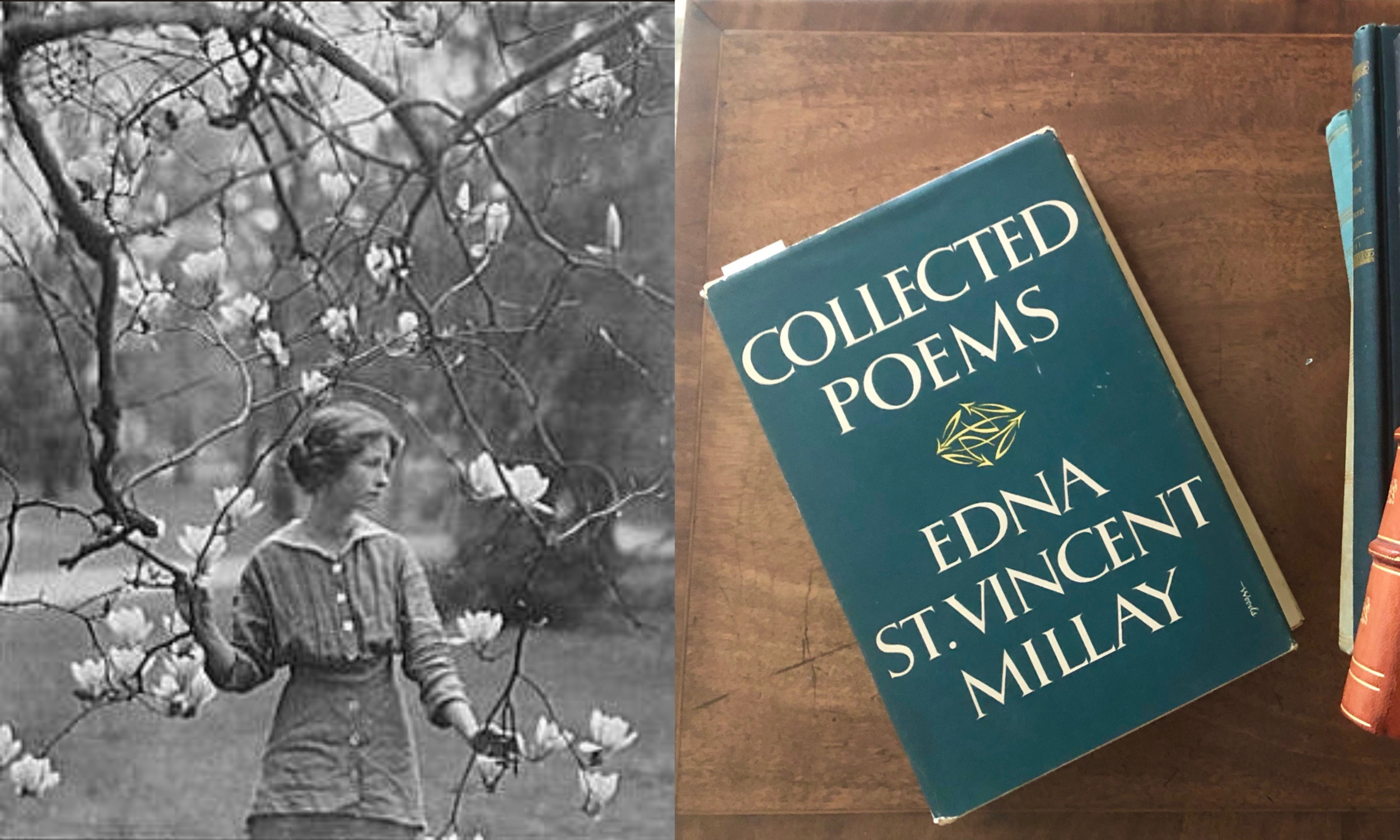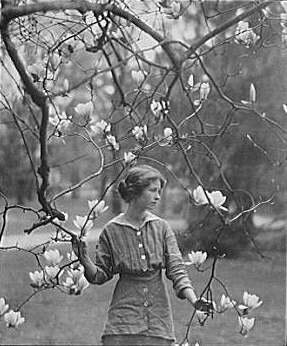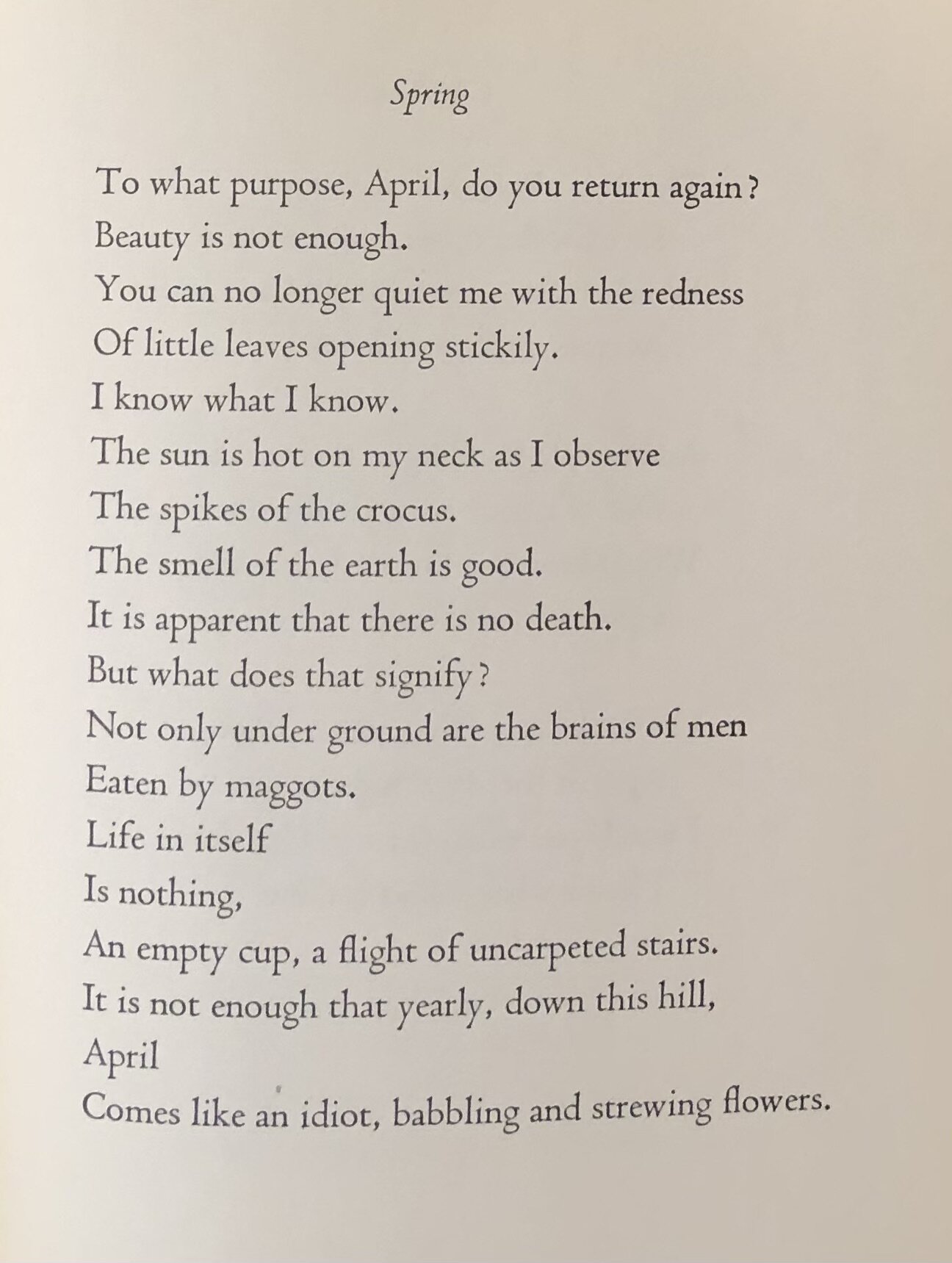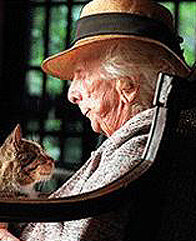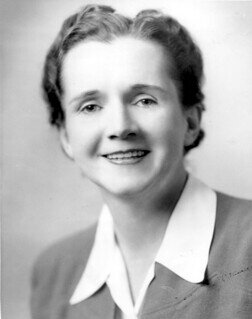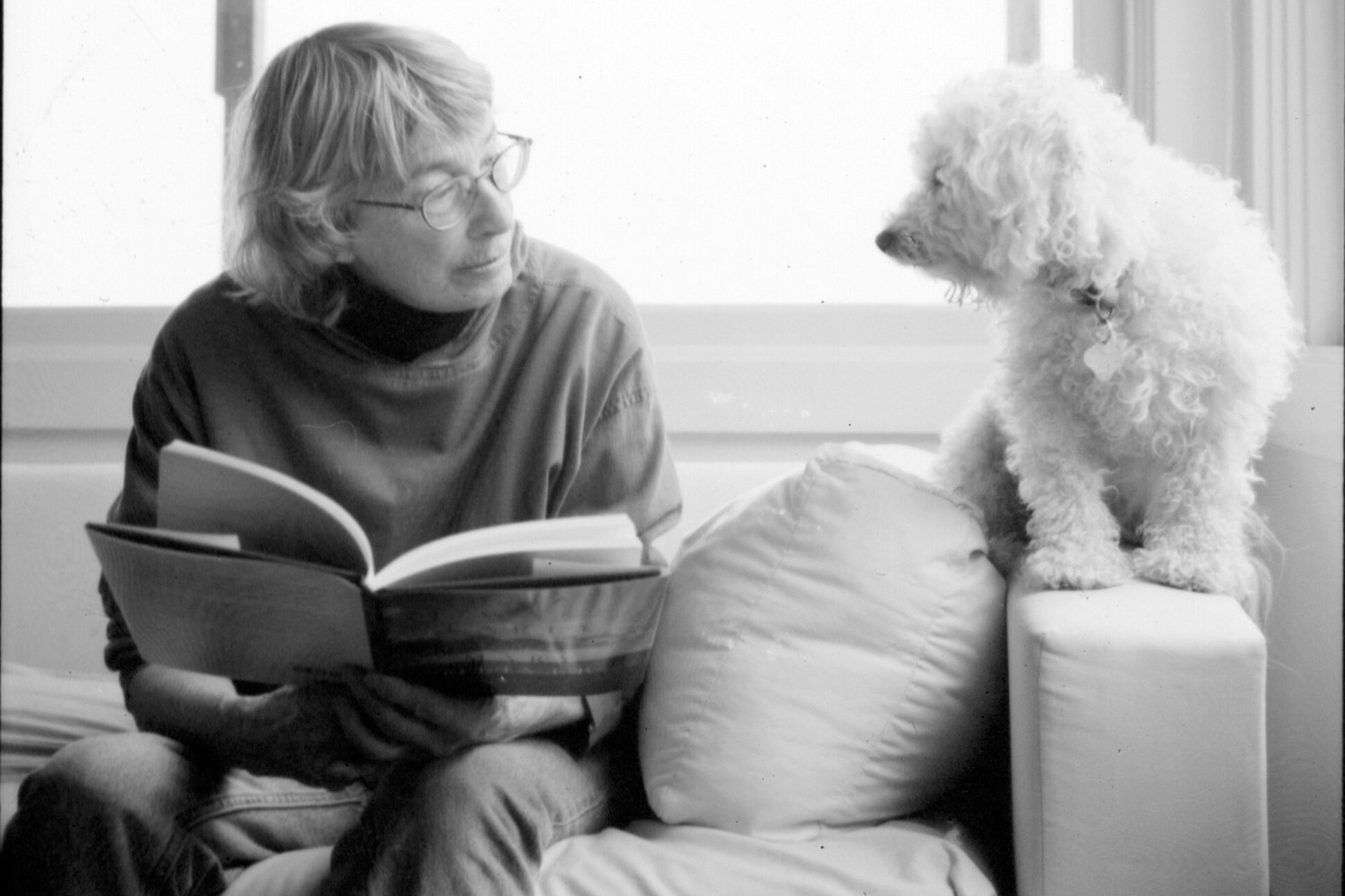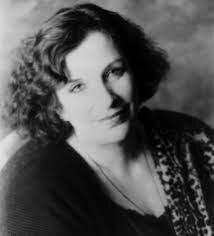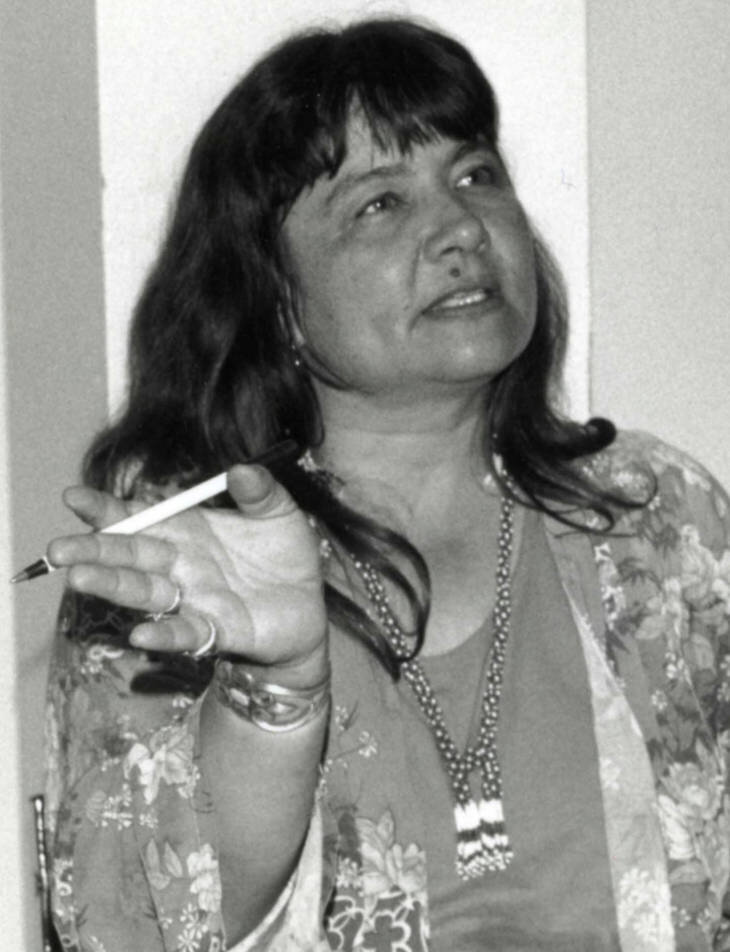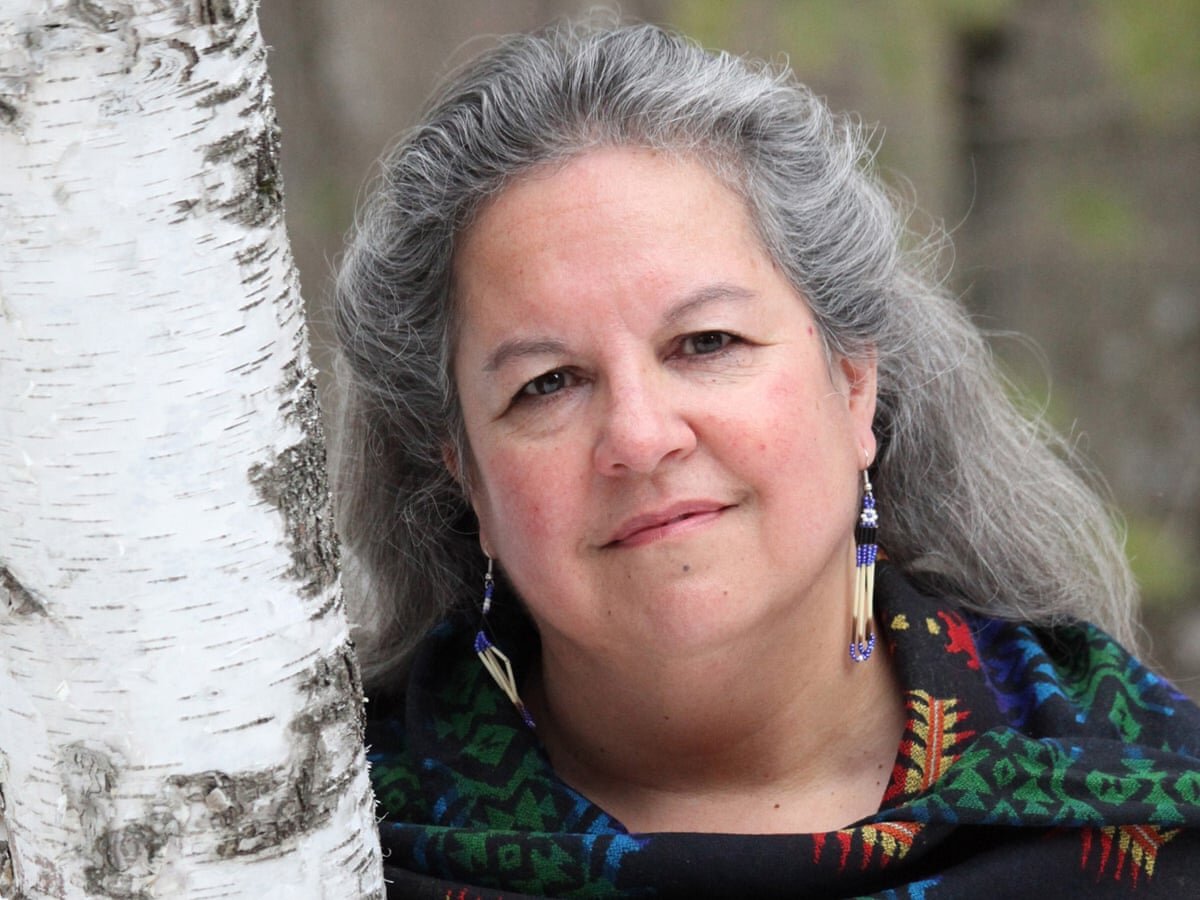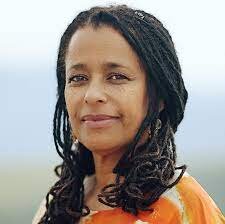10 Must-Read Women Nature Writers
Emily Ellis
Writing about nature and the environment - whether a nonfiction discourse on climate change, or a poem about the petals of a peony - can help foster a deeper understanding and appreciation for the natural world. Inarguably, some of history’s most impactful nature writing has come from women: legendary writers like Rachel Carson, Mary Oliver and Leslie Marmon Silko who have helped us see the world, and our place in it, in new ways.
To celebrate Women’s History Month, we’ve compiled a list of ten must-read women writers whose work explores plants, wildlife and the environment, ranging from historical to contemporary.* After you’ve scrolled through this list of historical women writers, head over to our new The World in Her Words exhibit to peruse the writing from six talented modern-day women who are inspired by the natural world.
A woodcut by Utagawa Kuniyoshi illustrating Chiyo-ni’s famous haiku, Morning Glory. Public Domain.
Fukuda Chiyo-ni (1703-1775)
A Japanese poet and Buddhist nun, Fukuda Chiyo-ni is known as one of the greatest haiku poets of all time. She began writing haikus (a short form of Japanese poetry) as a child, and by her late teens, her work was well known across Japan. While she was influenced by renowned haiku poet Matsuo Bashō, she also developed her own unique writing style, helping to pave the way for other women haiku poets in a previously male-dominated art.
The unity of humans and nature was a theme in much of Fukada’s work. One of her best-known poems is “Morning Glory” - one of several haikus she penned about the flower:
morning glory!
the well bucket-entangled,
I ask for water
Anne Spencer (1882-1975)
Anne Bethel Spencer in her wedding dress, 1900. Public Domain Image.
Anne Spencer was not only one of history’s most significant women nature poets, but a librarian, educator, gardener, and civil rights activist. Although she lived the majority of her life in Virginia, she was close friends with Harlem Renaissance luminaries such as Langston Hughes and W.E.B. DuBois. Her Lynchburg, VA home served as a gathering space for Black intellectuals, artists and activists throughout her life.
Nature and gardening featured prominently in Spencer’s work, along with themes of race and religion. She published 30 poems during her lifetime, and was only the second Black poet to be included in the Norton Anthology of Modern Poetry (1973). Her home and garden in Lynchburg are now a museum and public garden - a perfect day-trip for Virginia residents in search of education and inspiration.
Edna St. Vincent Millay (1892 – 1950)
Photo: The Library of Congress
OSGF founder Bunny Mellon was so fond of poet Edna St. Vincent Millay that she used to keep a collection of her poems beside her bed. Books by the poet and playwright feature prominently in the Oak Spring Garden Library; fittingly, since much of Millay’s work centered around plants and nature.
Millay became the first woman to win the Pulitzer Prize for poetry in 1923, at the age of only 31. She was popular during her life time for her riveting readings as well as for her progressive political stances, frank portrayal of both hetero and homosexuality, and her descriptions of female experience and expression. Along with her contemporary Robert Frost, she was considered one of the most skilled sonnet writers of the twentieth century.
Marjory Stoneman Douglas (1890 - 1998)
Photo: Friends of the Everglades
Journalist and conservationist Marjory Stoneman Douglas is now known as “the mother of the Everglades” for her efforts to protect the fragile Florida wetlands. As a young woman, she moved to Florida to work at what is now The Miami Herald. It wasn’t until the 1940s that she developed an interest in researching the ecology and history of the Florida everglades and the threats posed to them by development. Her 1947 book, Everglades: River of Grass, helped show the biodiversity and beauty of an area that many people had considered worthless. Douglas received the Presidential Medal of Freedom for her conservation work in 1993, and would continue fighting for the everglades until her death at the age of 108.
Rachel Carson (1907 - 1964)
Photo: U.S. Fish and Wildlife Service
Scientist and writer Rachel Carson’s best known work, Silent Spring, led directly to the creation of the Environmental Protection Agency. A marine biologist, she began her career in the U.S. Bureau of Fisheries before becoming a full time writer following the publication of her bestsellers The Edge of the Sea, The Sea Around Us and Under the Sea Wind in the 1950s. It was the 1961 publication of Silent Spring, however, that firmly put her in the history books; the book described the harmful effects of pesticides on the environment, bringing international attention to the devastation being wrought by chemicals like DDT.
Mary Oliver (1935-2019)
Photo: the Poetry Foundation
One of history’s greatest nature writers, poet Mary Oliver passed away just two years ago in 2019. Her work focused on quieter, overlooked aspects of nature such as motionless ponds and ants crawling over peony petals. Much of her poetry featured the plants, animals, and landscapes of New England, where she lived for most of her life.
Oliver was heavily influenced by Edna St. Vincent Millay as a young poet. Like Millay, she won a Pulitzer prize for her work, along with other major awards. Oliver was called the country’s best-selling poet in a 2007 New York Times article - an indication of how her poetry helped people connect with and appreciate the natural world.
Clarissa Pinkola Estés (1945 - )
Photo: www.clarissapinkolaestes.com
Clarissa Pinkola Estés is an author, jungian psychoanalyst, and a cantadora (keeper of old stories) whose writing is influenced by her training as a psychologist and by the oral traditions she was raised in. Of Native American and Mexica Spanish descent, and grew up in a rural village near the Great Lakes, where was immersed in the oral tradition of old mythos and stories as well as ancient forms of healing, much of which centered around plants and animals. She is best known for her acclaimed 1992 book, Women Who Run with the Wolves, a collection of nature-centered myths, stories, and folktales taken from different traditions that are intended to help women reconnect with the world around them and with their wilder selves.
Leslie Marmon Silko (1948 -)
Photo: Arizona Memory Project
Novelist and poet Leslie Marmon Silko was a major contributor of the Native American literary and artistic renaissance, which began in the late 1960s. Of Mexican, Laguna Pueblo, and Anglo-American descent, much of her writing draws on Laguna myths and story-telling traditions and centers around the alienation of Native Americans in a white society. She is best known for her acclaimed 1977 novel Ceremony, the story of a World War II veteran who returns to his Laguna Pueblo Reservation and reconnects with the people, plants, and animals of his home.
Robin Wall Kimmerer (1953 - )
Photo: www.robinwallkimmerer.com
A writer, botanist, and member of the Citizen Potawatomi Nation, Robin Wall Kimmerer is considered a must-read author both for plant lovers and others who wish to broaden their understanding of our world. She is the award-winning author of Gathering Moss: A Natural and Cultural History of Mosses (2003) and the recent bestseller Braiding Sweetgrass (2020), which “embraces the notion that plants and animals are our oldest teachers.” A proponent of Traditional Ecological Knowledge, her interests as a writer and scientist include restoration of ecological communities as well as the restoration of human relationships to land.
Carolyn Finney
Photo: Middlebury College
Author, storyteller and cultural geographer Caroyln Finney may be the youngest writer on this list, but her ground-breaking work - which centers around diversity and inclusion in outdoor spaces - is sure to go down in history. Her first book, Black Faces, White Spaces: Reimagining the Relationship of African Americans to the Great Outdoors (2014) examines the environmental legacy of slavery, racial violence, and segregation while also celebrating contributions that Black Americans have made to the environment. Finney speaks frequently (digitally and in person) about issues related identify, difference, creativity, and resilience, challenging people to question whose stories frame or are left out of environmental institutions and issues. Check out her current schedule of speaking events here.
This list represents only a fraction of great women writers, historical and contemporary, whose work explores nature and the environment. Other writers to check out include (but are not limited to) : Barbara Kingsolver, June Jordan, Audre Lourd, Alice Walker, Lucille Clifton, Rita Dove, Susan Fenimore Cooper, Gene Stratton-Porter, Mary Austin, Nan Shepherd, Kathleen Dean Moore, Ursula Le Guin, Annie Dillard, Ann Haymond Zwinger, Jane Goodall, Octavia Butler, Emily Dickinson.
*Special thanks to BCCF greenhouse manager Caitlin Etherton for her help with this post!
